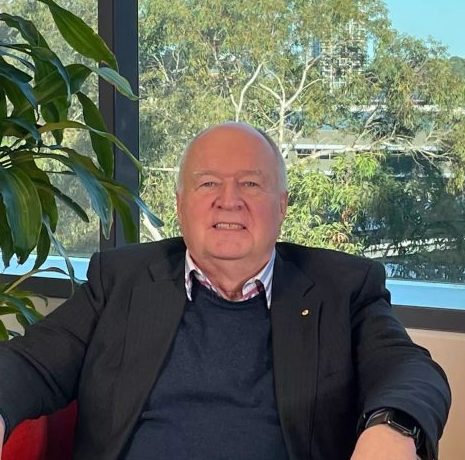What are the current challenges in heart failure management in Asia?
For this very first question on the challenges of heart failure in Asia, I think we can look at it from a few perspective, not just from a doctor’s perspective. Let’s start with the patients first because at the end of the day, the patient is the main target audience that we want in heart failure management. So for patient and caregiver, I think for a start, we have to understand that, heart failure as a chronic disease poses a very big burden on them. So we’re not just talking about managing a chronic illness. A lot of other impacts, such as on the socioeconomic status as well. A lot of heart failure patients because of physical and emotional burden of the disease may actually lose their livelihood. Finally, to continue to finance their treatment, you need a lot of help from other external parties as well. So that’s one aspect of the patient. And of course, being a very complex chronic disease, they also need to have awareness which may not come very natural to the patient and caregiver. Even for doctors, some may not be very aware of this disease, so let alone a layperson.
Then, if you look at it from the perspective of the doctors and healthcare physicians, or even allied health care and nurses, awareness is a big issue for heart failure, especially in Asia. As you know, for the field of cardiology, we are very familiar with myocardial infarction with ischemic disease, but heart failure as a subspecialty only came about maybe in the last 20 years. In the last 20 years, a lot of knowledge has actually evolved in the field of heart failure. From not just reduced ejection fraction, now to preserved ejection fraction as well. From a diagnostic, the use of novel biomarkers such an NT-proBNP and BNP, to the use of advanced imaging for the diagnosis of heart failure, not just ECHO, now we have MRI and many other imaging techniques as well, to all the different drugs. In recent years, there are so many different drugs that we are using for heart failure. You can imagine if you are not a heart failure specialist, it is actually quite hard to keep track of all these. Especially for someone who is in a primary care setting, they need to be aware of all these as well because without the awareness, you really cannot offer the patient the option to all these different treatment.
Of course, lastly, the main challenge in Asia is also the healthcare system. You need to have good robust healthcare system so that you can tackle this growing pandemic in Asia where heart failure is becoming more and more a problem in many countries. So the government, the healthcare system, the ministry all play a very big role in the management of heart failure.
What are the key differences in heart failure management from other cardiovascular disease management?
For the second question on the key difference between heart failure management and other cardiovascular disease, we first have to define what heart failure is. If we take the analogy of renal failure, what are the nephrologist most afraid of? Regardless of diabetic kidney disease or other form of kidney disease, the end result is end stage renal failure. A few lucky ones may get renal transplant but majority of patients will end up with dialysis. It is the same for heart failure – regardless of ischemic heart disease, dilated cardiomyopathy, or other insult to the heart, the endpoint for most patients will be heart failure.
Of course, in some patients if not treated properly, it would end up in end stage heart failure or what we call advance heart failure. So first, heart failure is the end-point of a lot of insult to the cardiac tissue. So it is a much more advanced disease compared to other cardiovascular risk factor or disease such as hypertensive heart disease or ischemic heart disease with preserved ejection fraction. Not only that, it is also made more complex, because we do know that heart failure is associated with a lot of co-morbidities such as diabetes, anemia, chronic kidney disease as well. That makes the management even more challenging, so I think this is the main difference.
We know that heart failure tend to occur in the elderly patients, especially for heart failure with preserved ejection fraction predominantly affecting the elderly patients who also have many other comorbidities such as COPD lung disease. They are more prone to infection as well so all that makes it more challenging. But there are many good strategies that we have now and we have many techniques to manage all these patients with co-morbidities. Despite it being challenging, I think the optimal result can be achieved for this group of patients if we take good care in the management of this group of patients.
What are the approaches to overcome these challenges in Singapore and what are the outcomes?
For this question, I am going to first focus on the local setting here in Singapore where I am based in. For a start, I think we realize that heart failure is a very important chronic disease. With an aging population in Singapore, I think we are seeing more and more heart failure patients, not just reduced ejection fraction, but we are seeing more and more preserved ejection fraction as well. For example, our local studies show that in the cardiology setting such as where I am based in, the National Heart Centre Singapore, about 20 over percent of patients have heart failure preserved ejection fraction. But as we move to other medical units, such as internal medicine where they tend to see more elderly patients, then the percentage of HFpEF among the heart failure patients increases to 40-50%. I think with the aging population, this is going to get worse.
Therefore, there is a lot of attention locally in Singapore and we have actually set up a work group at a national level and a ministry level headed by a few heart failure specialists. Together with the multi-disciplinary team and the group of coordinators, we are trying to work with the primary care to come up with some strategies. How we can link the care from a tertiary care to the primary care? From diagnostic to treatment to non-drug treatments such as cardiac rehab to try to address, or to at least, slow down the progression of this disease in most patients.
At the same time, we have other initiatives, such as the Heart Failure Society of Singapore being formed in 2016. The purpose of this society is to increase awareness not just among doctors, but also among caregivers and the public to know more about heart failure. We work very closely with other organizations such as Singapore Heart Foundation and the Singapore Cardiac Society to increase awareness by giving webinars to doctors, training to younger doctors, at the same time, conducting public forum to the public. Some patients or their caregivers may be interested in the treatment of some of these strategies that we have for heart failure patients.
At a hospital setting, most hospitals in Singapore now would have a heart failure team. In fact, the heart failure team has grown quite a lot in certain places such as the National Heart Centre and we have a dedicated heart failure clinic for the advanced heart failure patients. In Singapore, we also have availability of heart transplant Left Ventricular Assist Device for the sicker patients. Fortunately in Singapore, because technology is widely used here, we have access to a lot of imaging techniques. In terms of diagnostics, I think most of the hospitals, if I am not wrong, would have the ability of biomarkers such as NT-proBNP to help in the management of patients, diagnosis of patients and in the prognostication of patients.
Of course, I think locally here in Singapore, we are also quite fortunate HSA works very fast. So for most of these state-of-the-art treatments, medications for heart failure, we do get them much earlier here in Asia as compared to many other countries. Usually when a landmark trial is released, the FDA has approved it, very shortly, HSA will approve it. So our patients don’t have to wait for a few years after the release of a landmark trial to get hold or get access to the latest treatment for heart failure.
What are some of the cross-country collaborations within Asia to address these challenges and what are the successes?
So one of the big challenges here in Asia, is that we do not have a big organisation or society. Unlike in America, all the different states of America have an ACCHA organisation and in Europe, all the different European countries are grouped under the European Society of Cardiology (ESC). But in Asia, for many years, each country is doing its own guidelines and initiatives, with some countries being more advanced in the treatment of heart failure and some countries a bit behind time and the emphasis on heart failure is also not the same in every country. Some may place more emphasis on heart failure versus other local societies.
I am glad to say is that in the last two to three years, there have been a lot of collaborations in this region. One such organization is the Asian Pacific Society of Cardiology (APSC), which had organised a lot of webinars and is opened up to a lot of member nations. Most of the countries in the Asia Pacific region belong to this APSC, except for a few countries like China. The webinars are fully accessible to all the participants, to all the doctors in the region and important topics in heart failure have been covered in the last few years. For example, topics in HFrEF, HFpEF, talking about diagnostics, device therapy and the latest medication for heart failure. So that’s one very important initiative.
At the same time, there are now more consensus statements. Even though we do not have a unified guideline here in Asia Pacific, unlike ESC and ACCHA where they have a guideline for heart failure, in Singapore we have our own guideline. Malaysia, Philippines and all the different countries have their own guideline. But we are now working very hard to come out with some consensus statement for this region, addressing some of the issues that are very unique to this part of the world. For example, we commonly hear Asian doctors complaining about our Asian patients being smaller build in size, having a low blood pressure, not being able to take big doses of drugs that are being practiced overseas such as in North America and Europe. How are we going to tackle this issue of low dose of medication Diabetes is also a very prominent feature here among the heart failure patients, and is unique in this part of the world. So all these consensus statements will guide our doctors, not just cardiologists, but any doctors. For example geriatrician, internal medicine doctors, or primary care doctors, who are involved in the management of heart failure because not every country has dedicated heart failure specialist. In some countries, the management of heart failure may be done by a non-heart failure specialist. With all these consensus statements, I think it will give a lot of insights to the doctors, and help them in managing a patient. The APSC has also taken a lot of initiatives. We have previously come up with a consensus statement with diabetes and we do touch on some portion of heart failure as well. I am glad to say that the APSC is also working next year in 2022 to come up with some consensus statements for the treatment of heart failure in this region as well.
Of course, APSC is just one of the many organisations or societies. We also have the ASEAN Federation of Cardiology and many other organisations. For example, I know that Hong Kong has just set up a heart failure society recently to improve the care of heart failure and I actually serve as the international advisor to Hong Kong Heart Failure Society. That is also a form of collaboration because Singapore Heart Failure Society is working with the Hong Kong Heart Failure Society so there are many examples that I can bring up repeatedly.
But the good thing is, not only are we now collaborating more in this region, but the region itself, Asia, is also collaborating more with other regions as well. Another example would be that of ESC Asia. There will be a conference at the end of the year where top experts from Europe will join us here virtually, now because of COVID impact, to have a conference on all different aspect of cardiology. Of course, heart failure is involved as well to get the local experts to educate our regional doctors on the latest development of heart failure. So not just within Asia, we are now also expanding collaboration with other continents, other regions.
In your opinion, what is still needed in the future to improve heart failure management in Asia?
What else can we do? What more can we do? Are we happy with what we have now? Obviously, I think all of you know the answer. We are not happy with what we have now. In general, the mortality of heart failure across this region, we are still talking about 50% within five years. If you compare with the most common cancers, such as breast cancer in women and other form of cancer in men, this is much worse than most of cancers. Besides lung cancer and pancreatic cancer, which are the two most feared cancer or malignancy, most other cancer patients actually fare better than heart failure. So unfortunately, I think our patients and our doctors in this region do not treat heart failure seriously.
Very commonly, a patient walks into my consult room: “Doctor, is a white spot on a chest X-ray is a tumor or cancer?” If I tell them “no, it is a heart failure”, the usual answer would be, “thank god, it’s not cancer”. But the patient does not understand heart failure is actually a worse off prognosis than cancer. I think there is still a lot of work to do, not just to the public but also to our healthcare workers.
For a start, we may want to emphasize to the junior doctors in the training or even during a training in medical school. Heart failure is such a big problem, I think a lot of teaching must be done in this field. There is no point teaching somebody some very rare disease that you probably only see once in your life versus something that you will experience every day. The analogy is, if you ask any nephrologist, a kidney doctor in the treatment of renal disease, every kidney doctor will be comfortable treating a renal failure patient, and every kidney doctor will be comfortable with ordering dialysis. But for heart failure, you are talking about a totally different scenario In the world of cardiology. Not everybody will be comfortable dealing with heart failure, especially the more advanced heart failure. A non-heart failure specialist in cardiology may not be up to date with the latest in heart failure. So if the end result for all insult to the heart eventually will lead to heart failure, I think it makes sense to equip all the cardiologists to be able to manage heart failure. Maybe only for the very, very sub specialized field like heart transplant or mechanical heart device – fair enough, leave it to a heart failure specialist.
In the ideal world, all heart failure specialist and non-heart failure specialist in cardiology should be comfortable with the latest diagnostic. Be very comfortable in when to use biomarkers and imaging. When do I initiate therapy, and when do I escalate the patient for device therapy. All these should be the basic for all trainees, the junior cardiology trainees.
The other thing that I think is very lacking here that we need to improve on is that we do not have a good primary care system to take care of heart failure. Unfortunately, heart failure patients in Asia, I can definitely say that for Singapore, are still very much done in the tertiary care. They do not get discharged to the primary care setting. In the long run, with a growing pandemic or heart failure with more and more patients in the aging population, there is no way we can have so many patients in the tertiary setting – there is just too many patients. Some of these more stable patients with heart failure need to be transferred out to the primary care so that the sicker patients and the newly diagnosed heart failure patient can get into the system to the tertiary care. Somehow, I wish I can clone myself, but we know it is not possible. So it’s time to start training everybody else to manage heart failure. And, the other thing that I am very worried about that I think we need to do more about is when a patient is in the hospital for the four to five days for acute decompensated heart failure we can track what we are doing. We can give them the best medicine. But once a patient steps out of hospital, they get discharged, nobody actually track them and we actually do not know what happened to them. So I think that to fight this heart failure epidemic or pandemic, this battle does not stop the moment a patient walks out of hospital. In fact, most patients should be spending majority of the time outside of hospital. So if they are spending majority of the time out of hospital, the battleground should be shifted outside of the hospital, to the community level. I think in an ideal world, we should have a strong primary care to take care of this group of patients, so there is a continuity of care from tertiary to primary, and we need better communication between tertiary hospital and primary hospital and importantly community-based care.
A lot of these patients are elderly. Imagine making them come back to the hospital or even to primary care may be a big challenge. They are usually very much homebound. Knee pain, hip problem, eyesight issue, is very common among the elderly and unfortunately, elderly are more prone to heart failure. So I think we also need to think of some community-based services for this group of patients. For example, community-based nurses bringing the battleground to the estate to where the patients stay. I think that should be the way to tackle heart failure so that if we pick up a problem early, we can intervene early. If needed, if primary care and the community nurses can relate or can communicate to the tertiary care and we give advice, and now with technology, I think videoconference or video consult/tele consult can also be used as well. Because once you allow the patient’s symptom to deteriorate to a severe state, then there is no choice but to re-admit the patient and we know that readmission or hospitalization is the biggest utilization, the biggest cost burden for a lot of patients. In the survey done in other heart failure registry, most patients said that the biggest obstacle to a good quality of life is actually recurrent hospitalization. I am sure nobody likes to be confined to hospital bed and the hospital food obviously is not nice as well. So that I think, that is the big challenge we have here in Asia, the connection between tertiary, primary care and community care.
What can be done at primary care level to improve heart failure management?
A lot of GPs still do not use NT-proBNP. Once it is anything to do with heart, they say, “Please go to the hospital, I am only a GP.” So they are not comfortable, which I don’t think should be the way to go forward. Because even when I was a young trainee in Australia many years ago doing my specialist training, the GP in Australia actually handled a lot of heart failure patients. The patient actually had to travel to see me only once a year in Australia. So most of the time, the GP is the one taking care of them. And what I do is when I see a patient is, I just dictate a letter to be typed out and send to GP to tell him what needs to be done. That should be the way to go forward and I think polyclinics also the nature of the work they do there is changing dressing, managing simple things like hypertension, diabetes, but once it comes to heart failure, I think they are not comfortable as well. If you think of it, with more and more elderly patients, heart failure patients is going to increase and they are going to live longer as well because of the better treatment. You need a system whereby if they are not too sick, they can be managed in a primary setting they have to be done there. If not, I end up with all the stable heart failure patients in the tertiary setting and the sicker patients will never get into the system.
Of course, certain things have to be done as well to empower them to manage heart failure patients. One is, some of these drugs that we use in the tertiary hospital has to be made available in a polyclinic. Some investigations such as NT-proBNP and simple blood test has to be made available in the polyclinic as well. Yes, I agree, if they need imaging, they have to come to the hospital. It is not possible to ask polyclinics to have imaging capability. So these are some of the simple things that we can do to empower the polyclinic. But of course, it is not so simple as to make NT-proBNP and the drug available in polyclinic. As we make it available, we also need to educate them. Because if not, they have no idea how to interpret – what does a value of 1000, 100 mean? Again, then you have to look at whether whatever you do is cost effective or not. Because the downside if you don’t do anything to it, you are going to get what I call, I understand Singapore is experiencing now, in the next 10-20 years we are going to see what we call a silver tsunami. Silver tsunami as in many people have grey hair. The number of people that will be 65 years old and above by 2030, is estimated to be one in three patients. So can you imagine, the number of heart failure patients will be a lot. So if we do not do that now, if we do not empower the primary care and spend a bit more now to prevent readmission, in 10-20 years’ time, we will run out of beds in a hospital setting. We cannot be admitting every single heart failure patient all the time.


















